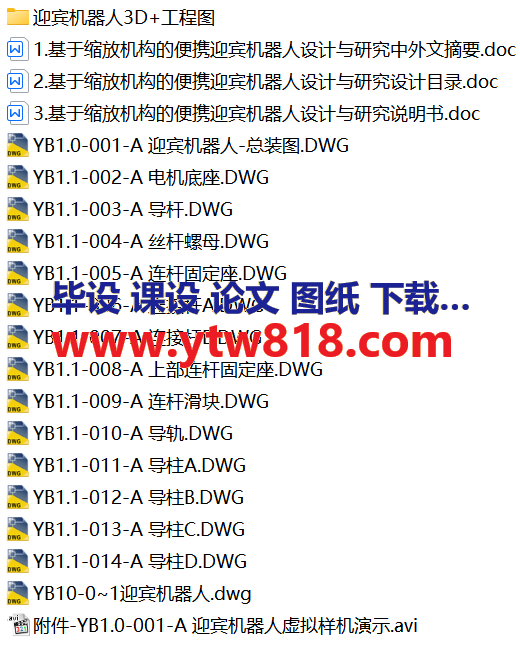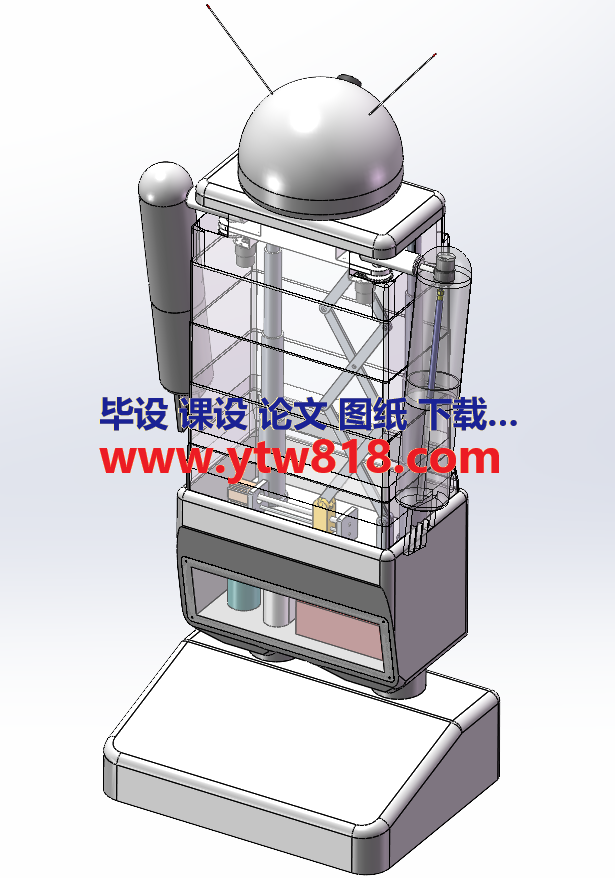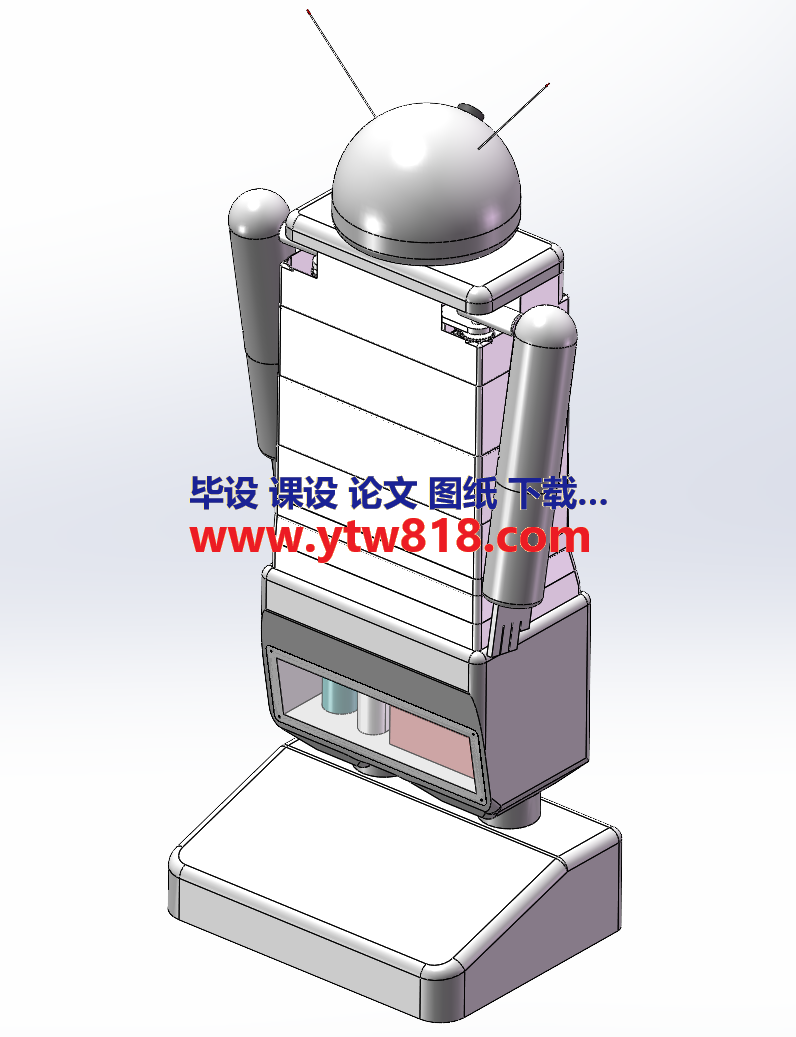
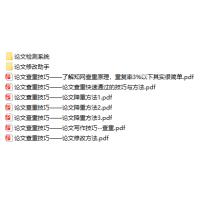 毕业设计辅助工具_免费论文文案文章修改神器_毕业设计辅助软件_论文查重...¥0
毕业设计辅助工具_免费论文文案文章修改神器_毕业设计辅助软件_论文查重...¥0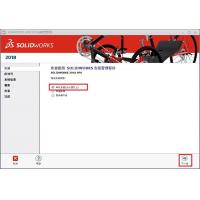 solidworks2018 中文版¥0
solidworks2018 中文版¥0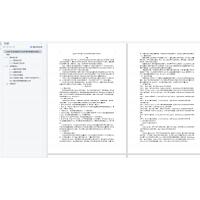 CA6140车床拨叉831006零件夹具设计说明书——9页...¥0
CA6140车床拨叉831006零件夹具设计说明书——9页...¥0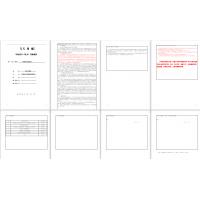 机械设计制造及其自动化毕业设计(论文)开题报告...¥0
机械设计制造及其自动化毕业设计(论文)开题报告...¥0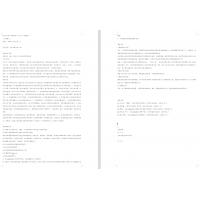 XX大学理工类毕业设计(论文)开题报告——自行车配件管理系统...¥0
XX大学理工类毕业设计(论文)开题报告——自行车配件管理系统...¥0 课程设计 CA6140车床拨叉831002的加工工艺及钻φ25孔的钻床...¥0
课程设计 CA6140车床拨叉831002的加工工艺及钻φ25孔的钻床...¥0 补价¥1.00
补价¥1.00 毕业设计辅助工具_免费在线论文文案文章修改神器_毕业设计辅助软件_AI...¥0
毕业设计辅助工具_免费在线论文文案文章修改神器_毕业设计辅助软件_AI...¥0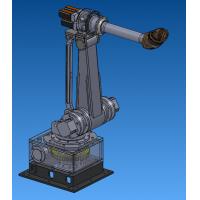 六自由度工业机器人设计【说明书(论文)+CAD图纸+SolidWork...¥45.00
六自由度工业机器人设计【说明书(论文)+CAD图纸+SolidWork...¥45.00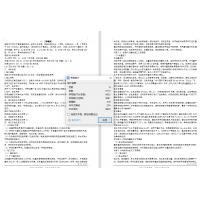 陈家沟桥梁施工组织设计方案.doc...¥0
陈家沟桥梁施工组织设计方案.doc...¥0摘要
.........................................................................
基于缩放机构的便携迎宾机器人的设计主要包括对便携迎宾机器人的概况以及国内外研究成果的描述,和研究目的及意义的阐述。该设计主要涉及到便携迎宾机器人的功能分析与原理设计,对电机选型做了详细计算,对各部分零件和控制机构做出了设计并且进行了虚拟样机的演示。
.........................................................................
.........................................................................
关键词 缩放机构;机器人;便携;虚拟样机演示
.
Title The design of the portable robot usher based on the scaling mechanism
ABSTRACT
The primary content in the design of the portable robot usher based on the scaling mechanism is the summarization about portable robot usher and the description about it at home and abroad.It is also related to purpose and its significance.The design of the portable robot usher based on the scaling mechanism is concerned about the analysis of its functions and the plan of its principles.Besides there is a detailed analysis about how to make a choice for the electric motor which is suitable.What is more is that it is also contained the design of the parts and the control mechanism.Then,the virtual prototype is be demonstrated.
Keywords: scaling mechanism,robot,portable,virtual prototype
目 录
1 引言…………………………………………………………………………………………… 1
2 本课题的研究现状、目的及意义………………………………………………… 2
2.1 国内外研究现状与成果应用…………………………………………………… 2
2.2 课题目标………………………………………………………………………… 5
2.3 研究意义………………………………………………………………………… 5
2.4 本章小结………………………………………………………………………… 6
3 功能分析与原理设计 …………………………………………………………… 7
3.1 迎宾机器人的功能分析………………………………………………………… 7
3.1.1 迎宾机器人的总共能………………………………………………………… 7
3.1.2 迎宾机器人的分功能………………………………………………………… 7
3.1.3 迎宾机器人的辅助功能……………………………………………………… 7
3.1.4 迎宾机器人的控制功能……………………………………………………… 7
3.1.5 迎宾机器人的功能结构图…………………………………………………… 8
3.2 迎宾机器人伸缩部分的原理设计……………………………………………… 8
3.2.1 方案I……………………………………………………………………………8
3.2.2 方案II…………………………………………………………………………10
3.2.3 方案对比选取以及初步设计…………………………………………………11
3.2.4 设计优化………………………………………………………………………13
3.3 迎宾机器人外观部分的设计……………………………………………………15
3.4 本章小结…………………………………………………………………………16
4 零件设计与运动仿真………………………………………………………………17
4.1 机构的受力分析…………………………………………………………………17
4.2 动力部分的零件设计……………………………………………………………17
4.2.1 电机的选型……………………………………………………………………17
4.2.2 直线运动组件的设计…………………………………………………………18
4.2.3 连接组件的设计………………………………………………………………20
4.3 伸缩部分的零件设计……………………………………………………………21
4.3.1 传动零件的设计………………………………………………………………21
4.3.2 安装零件的设计………………………………………………………………22
4.3.3 手臂伸缩零件的设计…………………………………………………………22
4.4 其他部件的设计…………………………………………………………………23
4.5 基于SolidWorks的运动仿真……………………………………………………24
4.6 本章小结…………………………………………………………………………24
结论 ……………………………………………………………………………………25
参考文献………………………………………………………………………………26
致谢 ……………………………………………………………………………………27
………………
